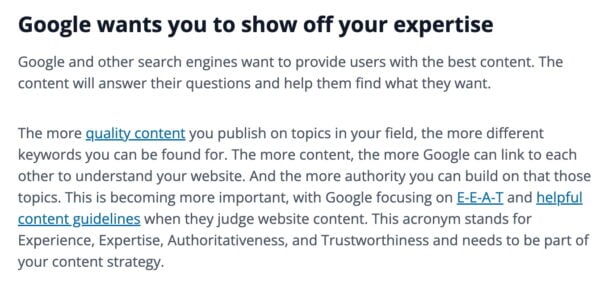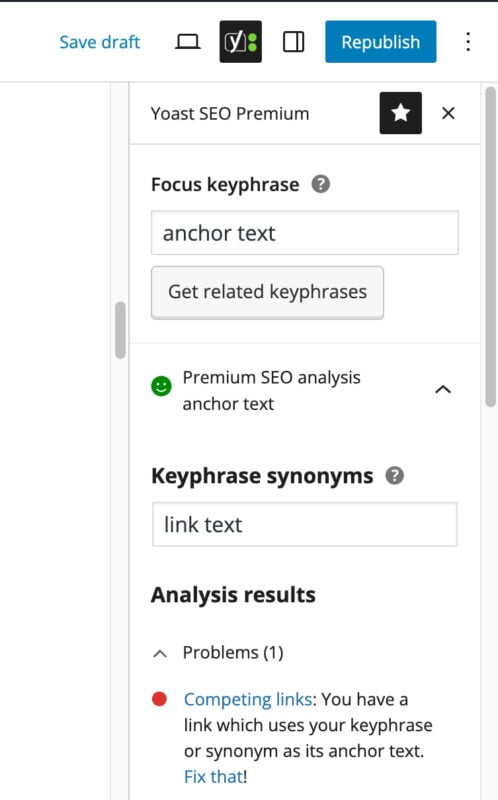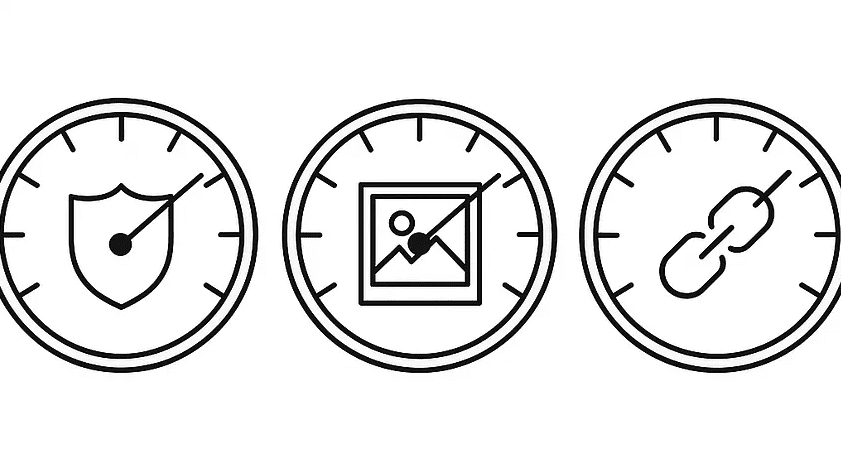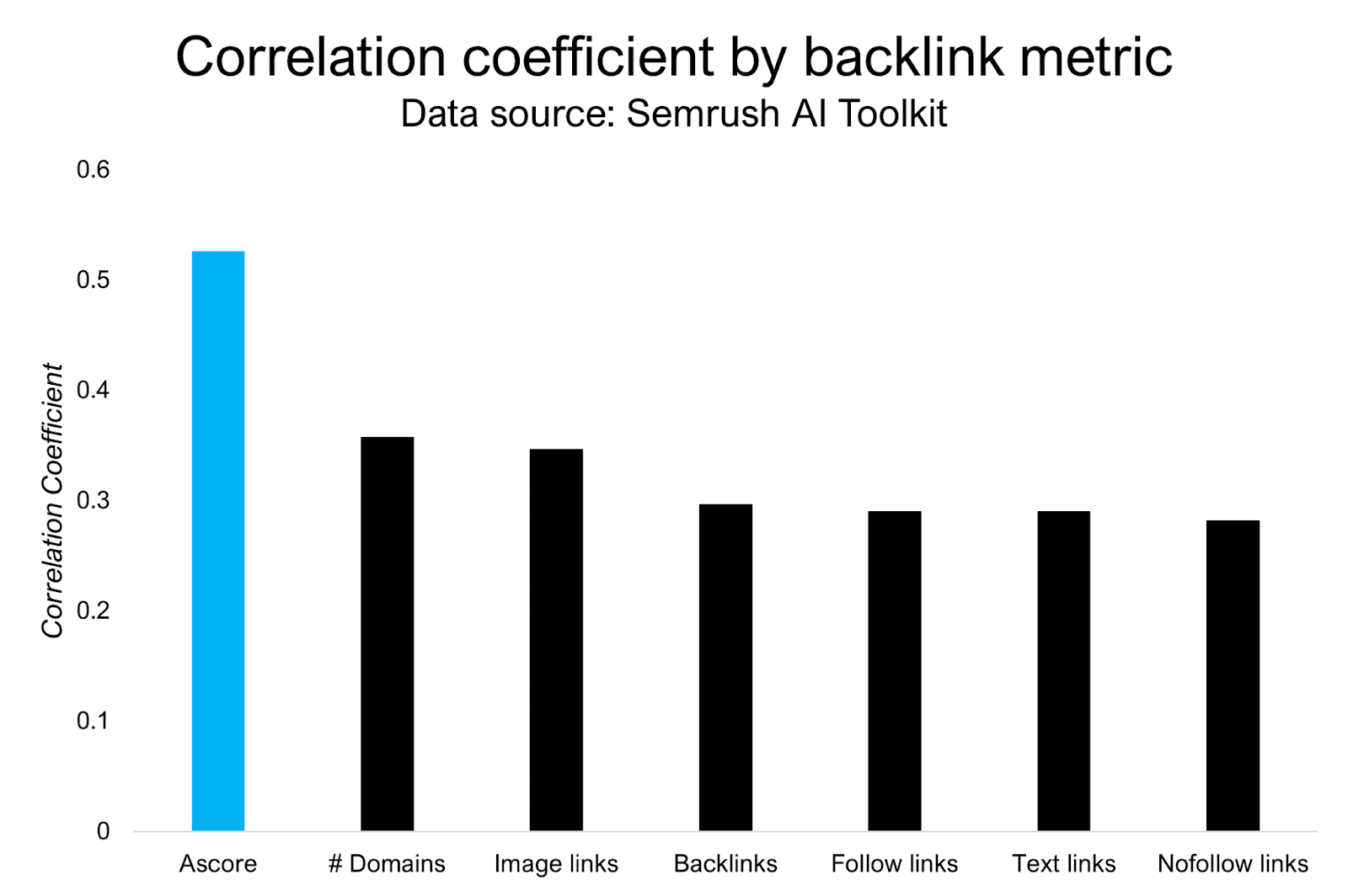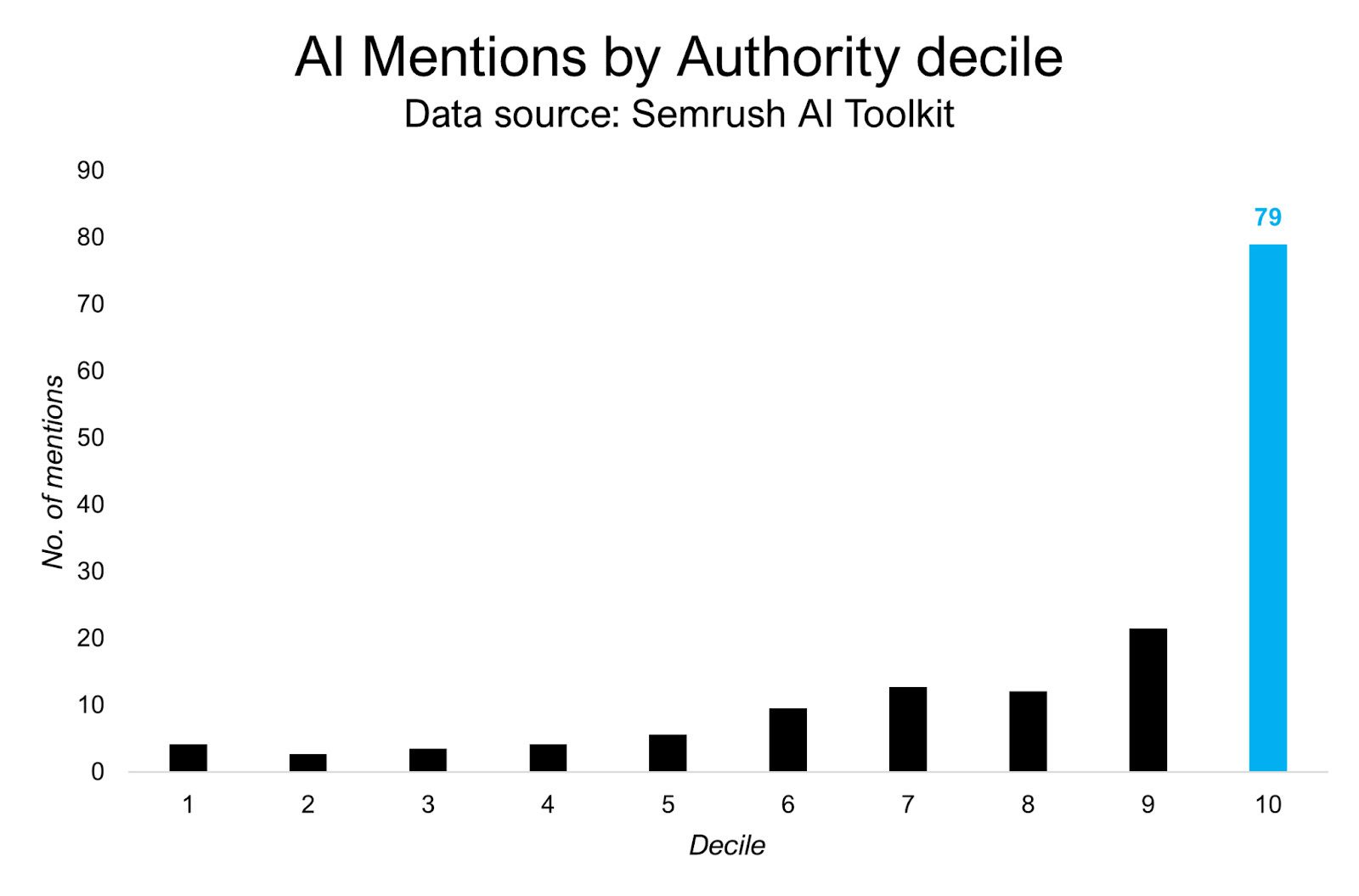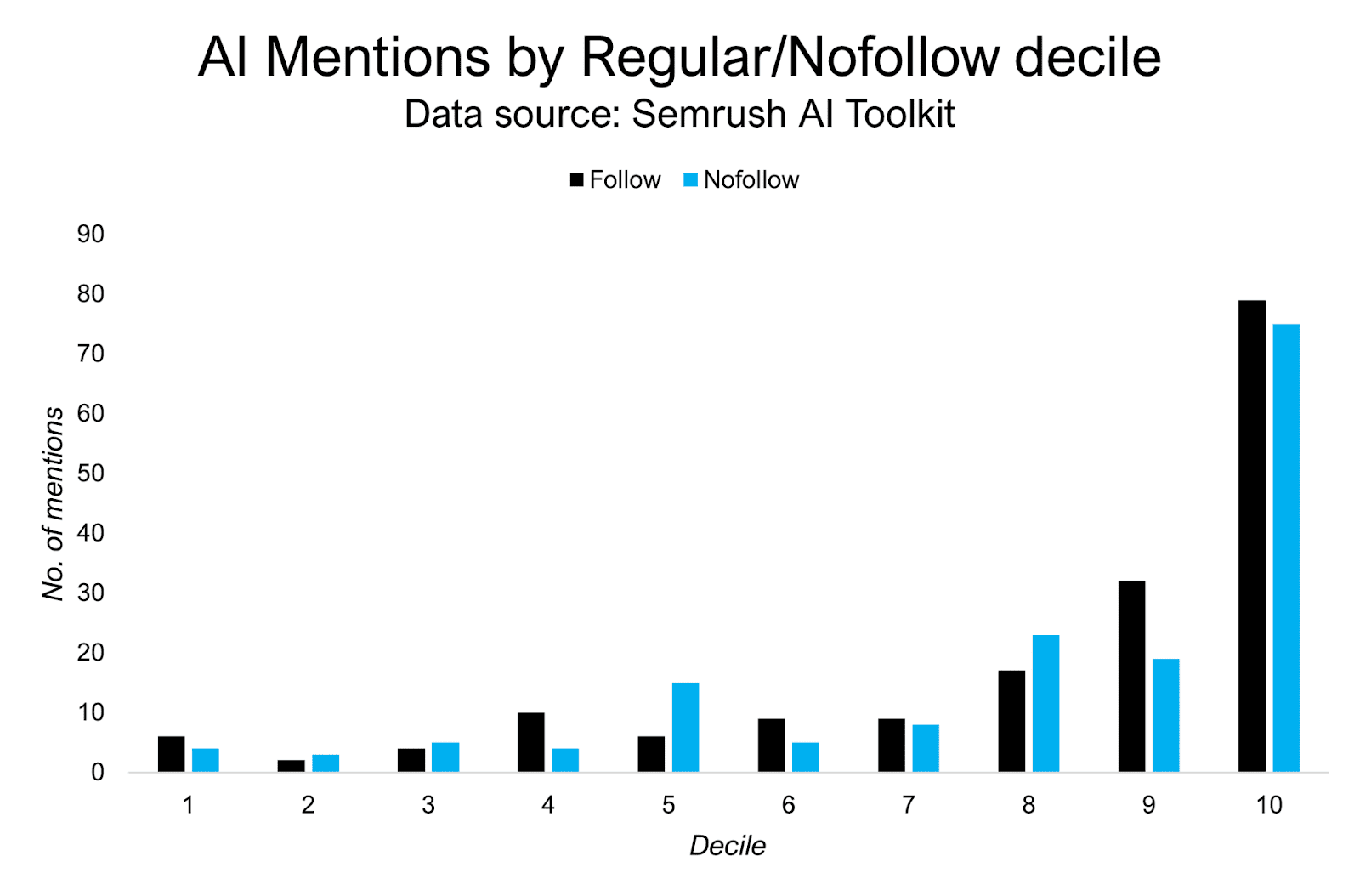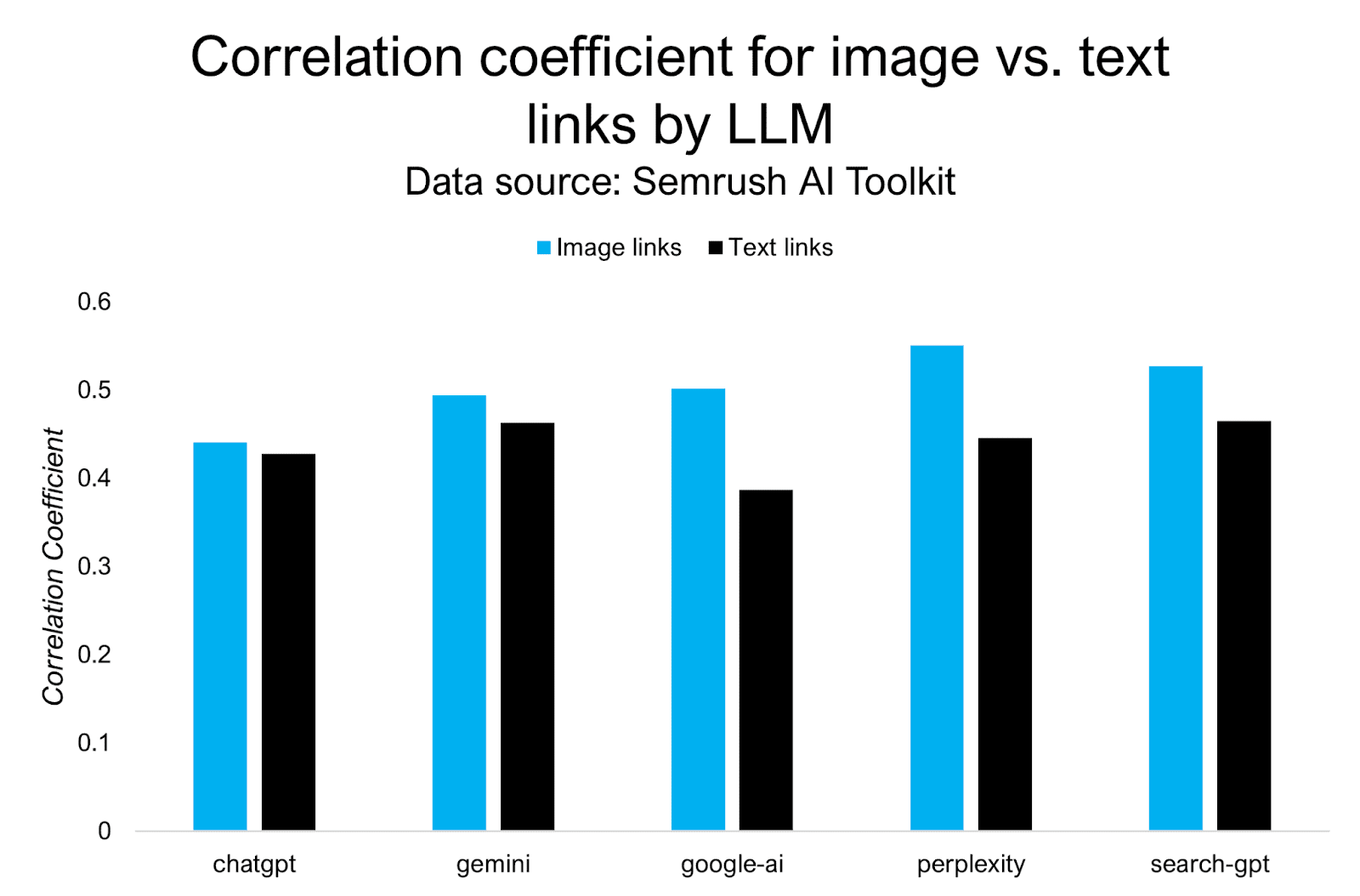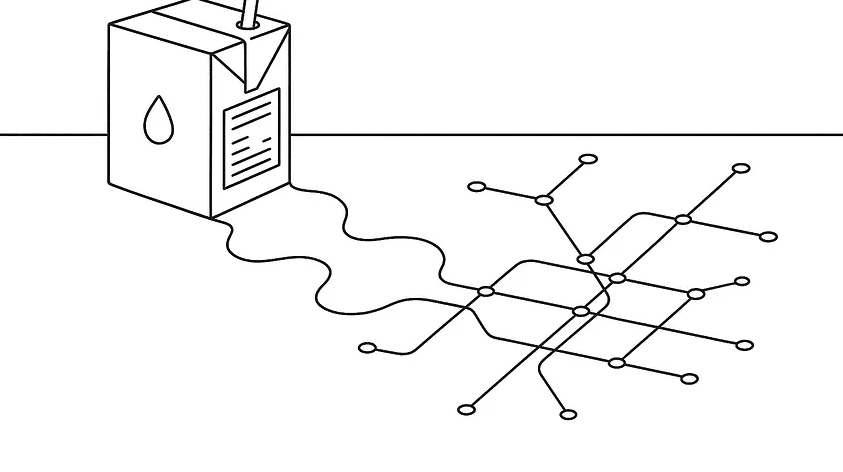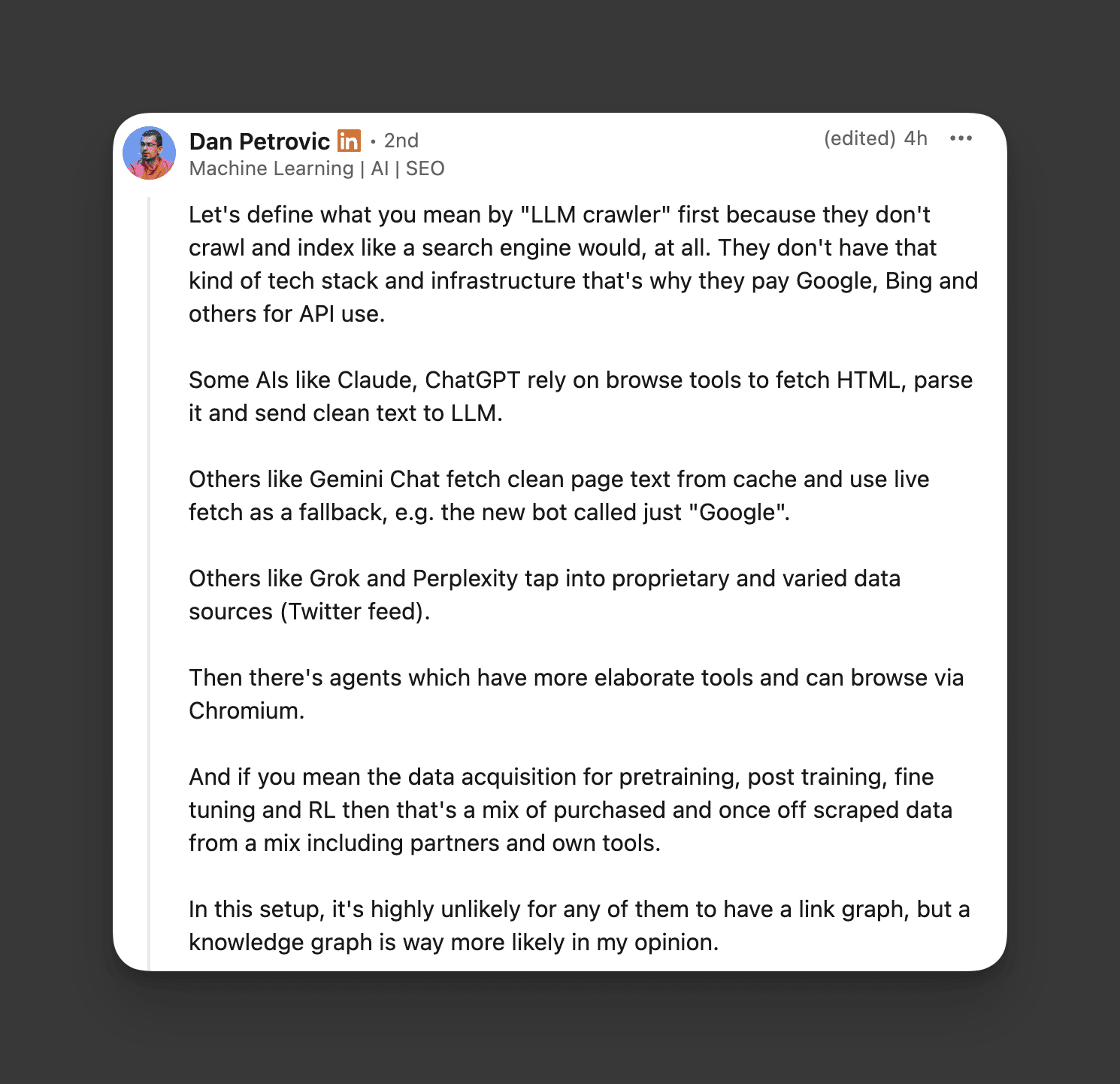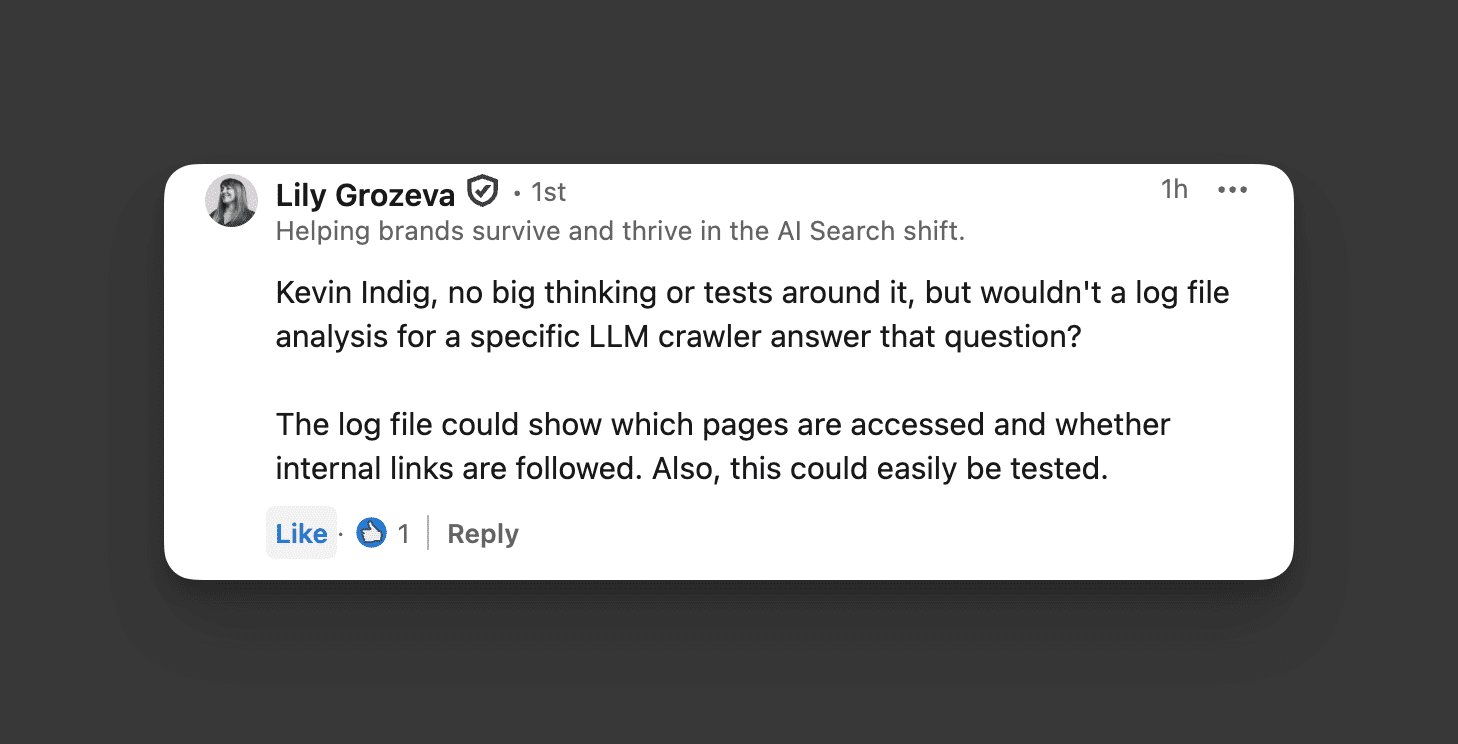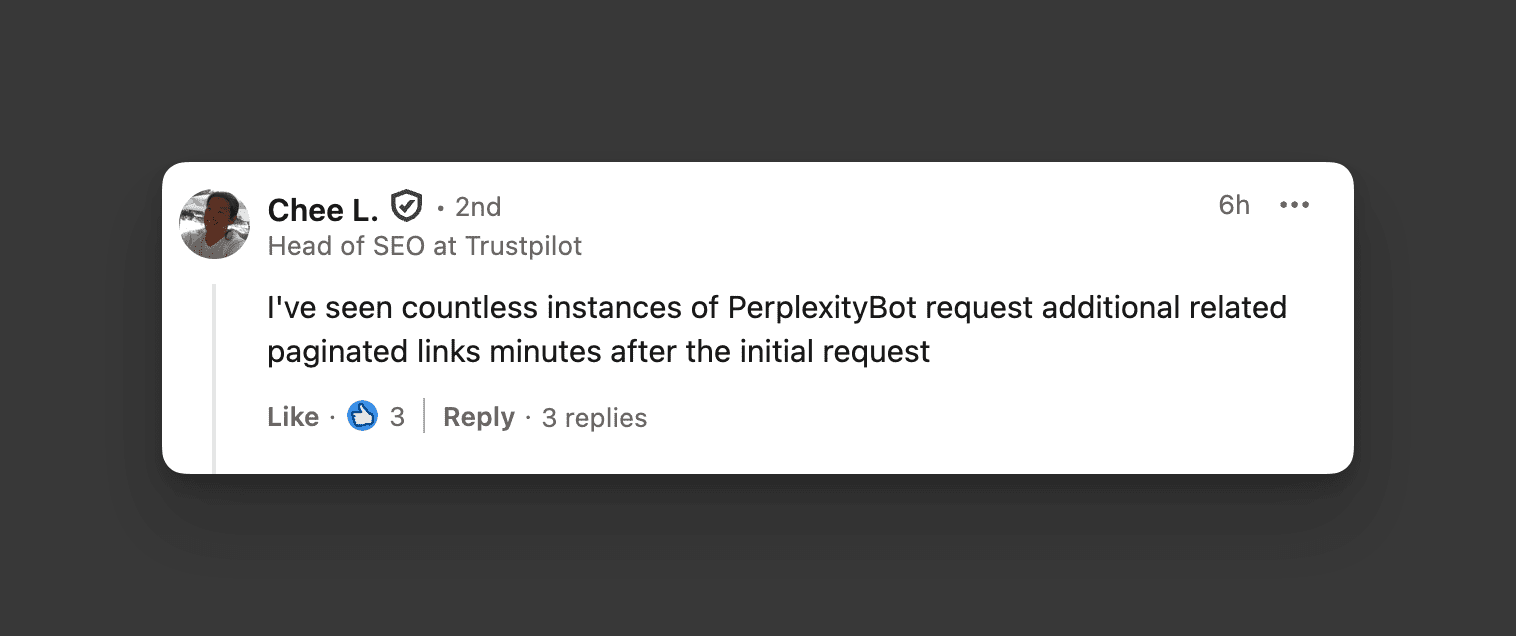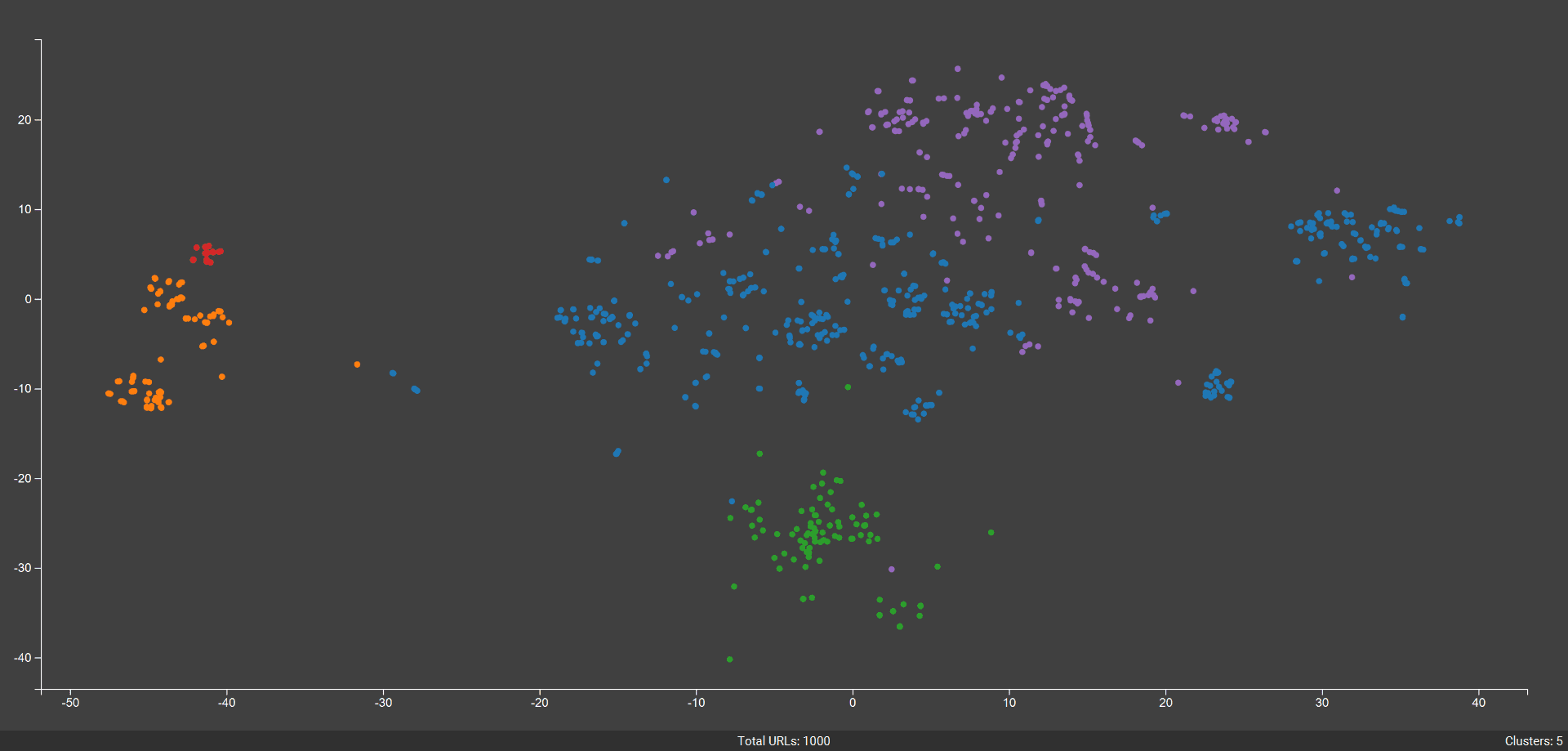What is link building in SEO?
Link building is the practice of earning links from other websites to your own. These links act as signals of trust and authority for search engines, helping your pages rank higher in search results. Quality matters more than quantity. A few relevant, high-authority links are far more valuable than many low-quality ones. Modern link building focuses on creating genuinely useful content, building genuine relationships, and earning links naturally, rather than manipulating rankings.
Key takeaways
- Link building helps establish content credibility through acquiring backlinks from other websites.
- It focuses on quality over quantity, emphasizing trust and relevance in search engine rankings.
- Effective link building involves engaging with digital PR and fostering genuine relationships with sources.
- Producing valuable content and fostering connections leads to high-quality links and improved online visibility.
- Today, AI-driven search evaluates authority based on context, relevance, and structured data, not just backlinks.
What is link building?
Link building means earning hyperlinks from other sites to show search engines your content is trustworthy and valuable. Now, it’s more like digital PR, focusing on relationships, credibility, and reputation, not just quantity. AI-powered search also considers citations, structured data, and context alongside backlinks. By prioritizing quality, precision, and authority, you build lasting online visibility. Ethical link building remains one of the most effective ways to enhance your brand’s search presence and reputation.
Link building is a core SEO tactic. It helps search engines find, understand, and rank your pages. Even great content may stay hidden if search engines can’t reach it through at least one link.
To get indexed by Google, you need links from other sites. The more relevant and trusted those links are, the stronger your reputation becomes. This guide covers the basics of link building, its connection to digital PR, and how AI-driven search evaluates trust and authority.
If you are new to SEO, check out our Beginner’s guide to SEO for a complete overview.
What is a link?
A link, or hyperlink, connects one page on the internet to another. It helps users and search engines move between pages.
For readers, links make it easy to explore related topics. For search engines, links act like roads, guiding crawlers to discover and index new content. Without inbound links, a website can be challenging for search engines to discover or assess.
You can learn more about how search engines navigate websites in our article on site structure and SEO.
A link in HTML
In HTML, a link looks like this:
Yoast SEO plugin for WordPress
The first part contains the URL, and the second part is the clickable text, called the anchor text. Both parts matter for SEO and user experience, as they inform both people and search engines about what to expect when they click.
Internal and external links
There are two main types of links that affect SEO. Internal links connect pages within your own website, while external links come from other websites and point to your pages. External links are often called backlinks.
Both types of links matter, but external links carry more authority because they act as endorsements from independent sources. Internal linking, however, plays a crucial role in helping search engines understand how your content fits together and which pages are most important.
To learn more about structuring your site effectively, refer to our guide on internal linking for SEO.
Anchor text
The anchor text describes the linked page. Clear, descriptive anchor text helps users understand where a link will direct them and provides search engines with more context about the topic.
For example, “SEO copywriting guide” is much more useful and meaningful than “click here.” The right anchor text improves usability, accessibility, and search relevance. You can optimize your own internal linking by using logical, topic-based anchors.
For more examples, read our anchor text best practices guide.
Why do we build links?
Link building is the process of earning backlinks from other websites. These links serve as a vote of confidence, signaling to search engines that your content is valuable and trustworthy.
Search engines like Google still use backlinks as a key ranking signal; however, the focus has shifted away from quantity to quality and context. A single link from an authoritative, relevant site can be worth far more than dozens from unrelated or low-quality sources.
Effective link building is about establishing genuine connections, rather than accumulating as many links as possible. When people share your content because they find it useful, you gain visibility, credibility, and referral traffic. These benefits reinforce one another, helping your brand stand out in both traditional search and AI-driven environments, where authority and reputation are most crucial.
Link quality over quantity
Not all links are created equal. A high-quality backlink from a well-respected, topic-relevant website has far more impact than multiple links from small or unrelated sites.
Consider a restaurant owner who earns a link from The Guardian’s food section. That single editorial mention is far more valuable than a dozen random directory links. Google recognizes that editorial links earned for merit are strong signals of expertise, while low-effort links from unrelated pages carry little or no value.
High-quality backlinks typically originate from websites with established reputations, clear editorial guidelines, and active audiences. They fit naturally within the content and make sense to readers. Low-quality links, on the other hand, can make your site appear manipulative or untrustworthy. Building authority takes time, but the reward is a reputation that search engines and users can rely on.
Read more about this long-term approach in our post on holistic SEO.
Shady techniques
Because earning high-quality links can take time, some site owners resort to shortcuts, such as buying backlinks, using link farms, or participating in private blog networks. These tactics may yield quick results, but they violate Google’s spam policies and can result in severe penalties.
When a site’s link profile looks unnatural or manipulative, Google may reduce its visibility or remove it from results altogether. Recovering from such penalties can take months. It is far safer to focus on ethical, transparent methods. In short, you’re better off avoiding these risky link building tricks, as quality always lasts longer than trickery.
How to earn high-quality links
The most effective way to earn strong backlinks is to create content that others genuinely want to reference and link to. Start by understanding your audience and their challenges. Once you know what they are looking for, create content that provides clear answers, unique insights, or helpful tools.
For example, publishing original data or research can attract links from journalists and educators. Creating detailed how-to guides or case studies can help establish connections with blogs and businesses that want to cite your expertise. You can also build relationships with people in your industry by commenting on their content, sharing their work, and offering collaboration ideas.
Newsworthy content is another proven approach. Announce a product launch, partnership, or study that has real value for your audience. When you provide something genuinely useful, you will find that links and citations follow naturally.
Structured data also plays an important role. By using Schema markup, you help search engines understand your brand, authors, and topics, making it easier for them to connect mentions of your business across the web.
For a more detailed approach, visit our step-by-step guide to link building.
Link building in the era of AI and LLM search
Search is evolving quickly. Systems like Google Gemini, ChatGPT, and Perplexity no longer rely solely on backlinks to determine authority. They analyze the meaning and connections behind content, paying attention to context, reputation, and consistency.
Links still matter, but they are part of a wider ecosystem of trust signals. Mentions, structured data, and author profiles all contribute to how search and AI systems understand your expertise. This means that link building is now about being both findable and credible.
To stay ahead, make sure your brand and authors are clearly represented across your site. Use structured data to connect your organization, people, and content. Keep your messaging consistent across all channels where your brand appears. When machines and humans can both understand who you are and what you offer, your chances of visibility increase.
You can read more about how structured data supports this process in our guide to Schema and structured data.
Examples of effective link building
There are many ways to put link building into action. A company might publish a research study that earns coverage from major industry blogs and online magazines. A small business might collaborate with local influencers or community organizations that naturally reference its website, thereby increasing its online presence. Another might produce in-depth educational content that other professionals use as a trusted resource.
Each of these examples shares the same principle: links are earned because the content has genuine value. That is the foundation of successful link building. When people trust what you create and see it as worth sharing, search engines take notice, too.
In conclusion
Link building remains one of the most effective ways to establish visibility and authority. Today, success depends on more than collecting backlinks. It depends on trust, consistency, and reputation.
Consider link building as an integral part of your digital PR strategy. Focus on creating content that deserves attention, build relationships with credible sources, and communicate your expertise clearly and effectively. The combination of valuable content, ethical outreach, and structured data will help you stand out across both Google Search and AI-driven platforms.
When you build content for people first, the right links will follow.







